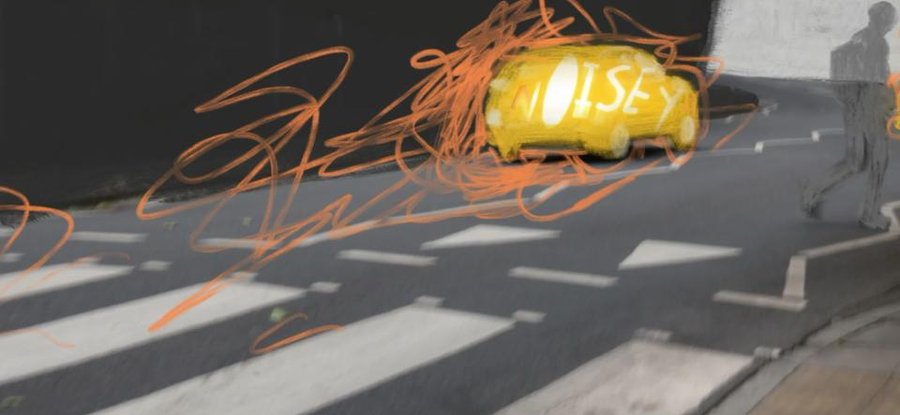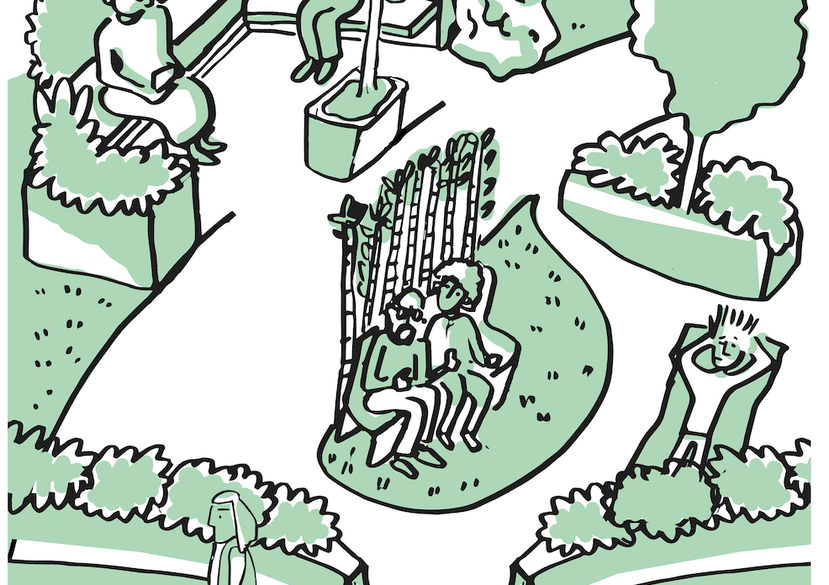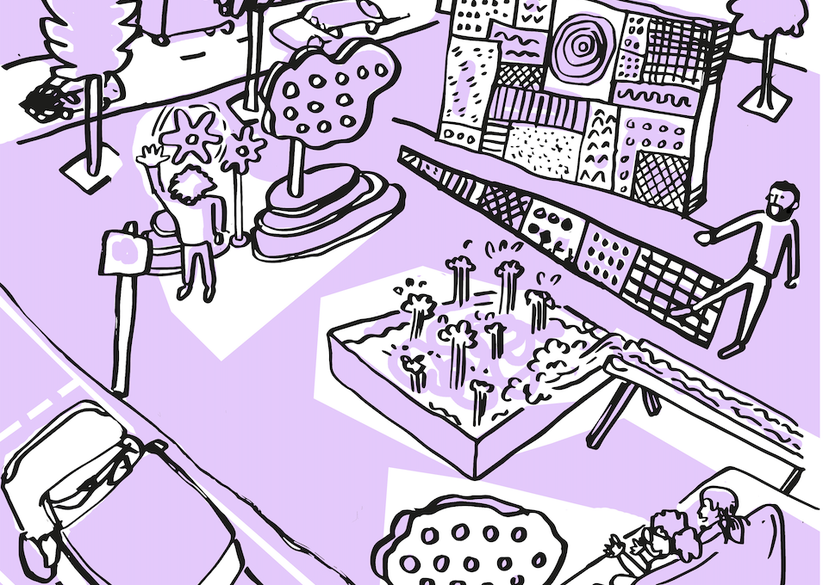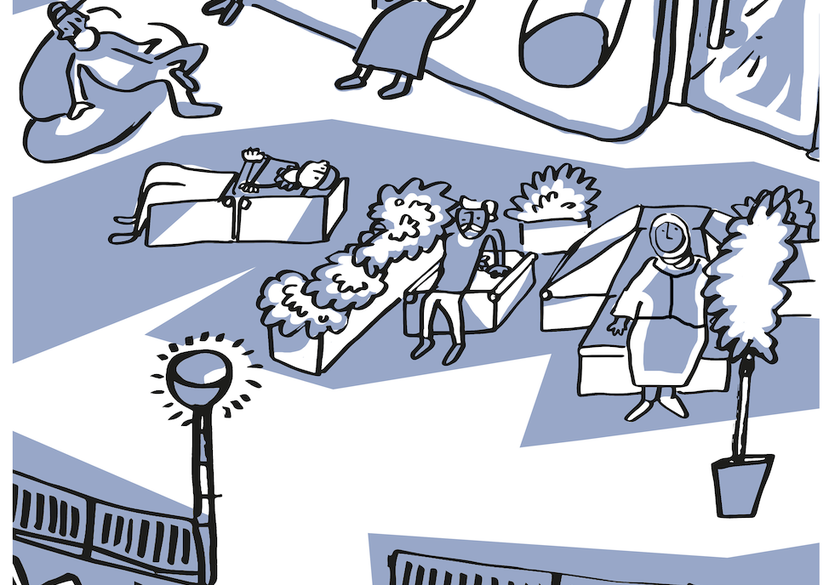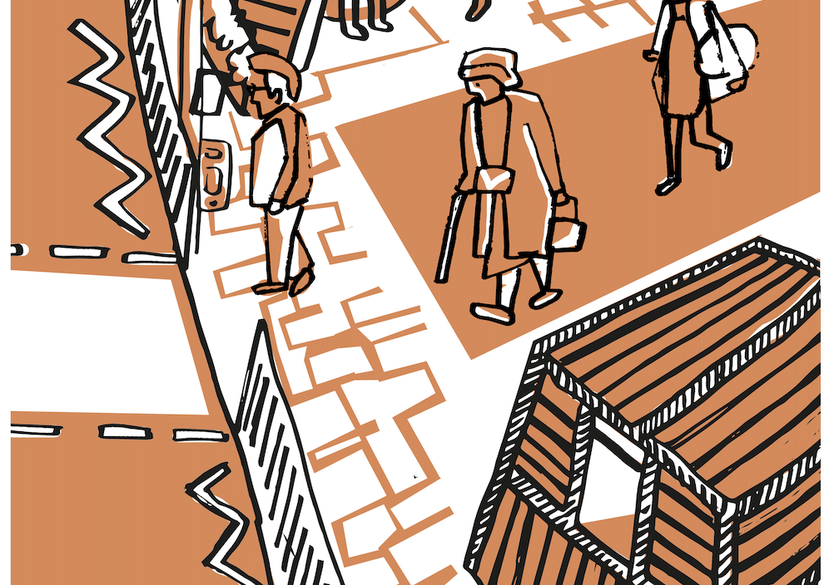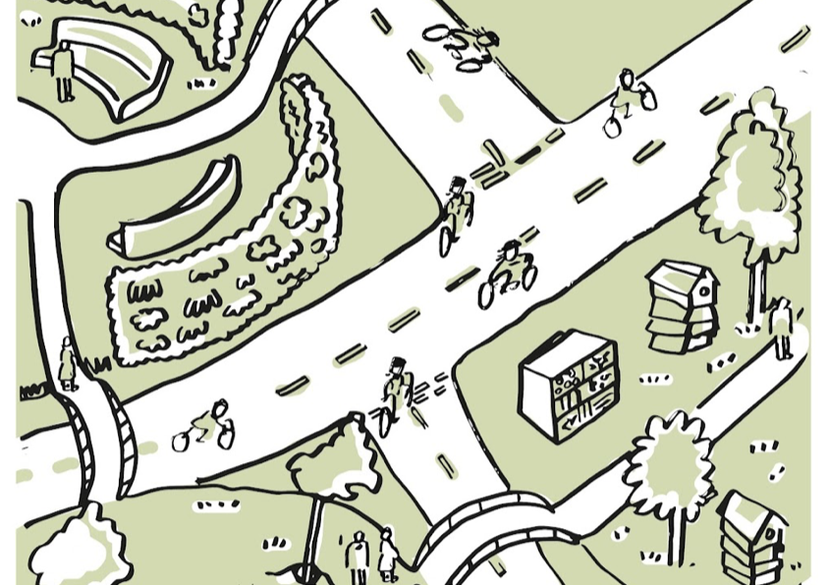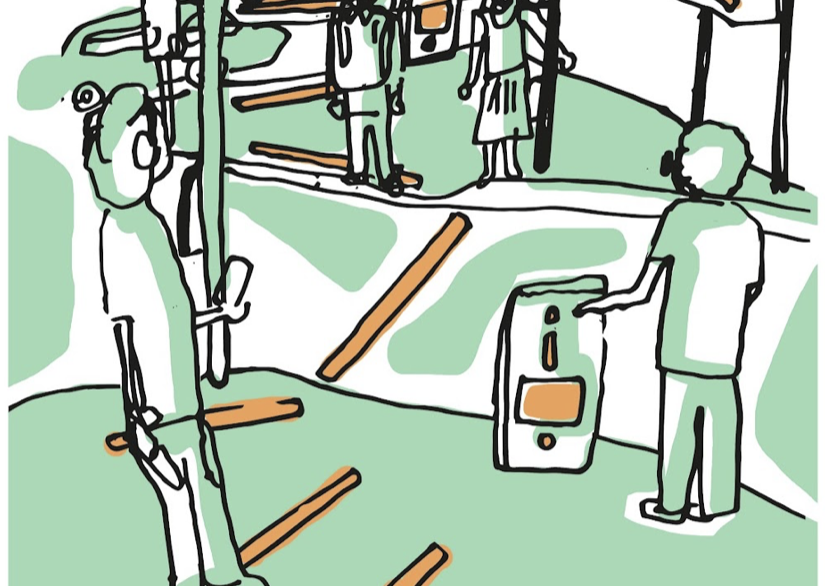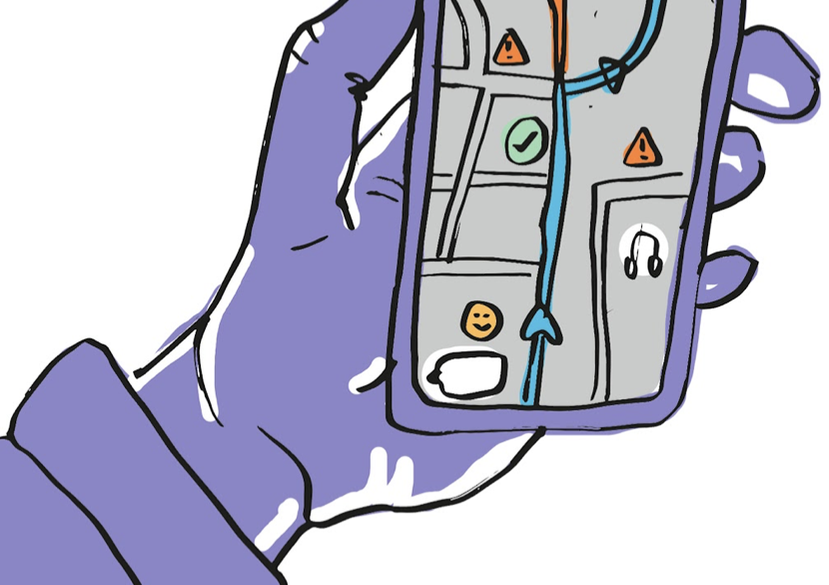
Key details
Date
- 11 December 2023
Author
- RCA
Read time
- 4 minutes
Streets for Diversity, a collaborative project between the Helen Hamlyn Centre for Design and the Intelligent Mobility Design Centre, explored how, at present, how our streets and public spaces are designed may serve to exclude those of us who are neurodivergent. The research led to 12 design opportunities that could help improve the inclusivity of our streets, which have been outlined in a report.
“Wouldn't it be great if our streets included everyone? And not just different bodies but different minds too, so they helped all of us to thrive? What if, instead of noise and lights, crowds and slopes, instead of concrete and fluorescent lights and diesel smoke, we had a different way of making our streets? A bus stop for quiet organisation, a friendly face on every corner, a wall that is a comfortable seat to perch, a pocket park at every crossing? A place for texture and a place for tapping, a place for peeing and hydrating, a place where we could pick up things that help us - to calm, to stop, to turn us around.” So says Dan Phillips, Innovation Fellow at the Intelligent Mobility Design Centre (IMDC), and co-lead of the project Streets for Diversity, a collaborative project between the IMDC and the Helen Hamlyn Centre for Design (HHCD).

A researcher and a participant taking part in a 'Walk and Talk'
There is very little knowledge or research about how neurodivergent people experience streets. This project, funded by the Rees Jeffreys Road Fund, aimed to bridge that gap in research and presented the idea that, currently, streets and public spaces may, by design, exclude some of us that are neurodivergent. Streets for Diversity investigated the way that neurodivergent people experience streets, and then used this experience to develop design recommendations that are more inclusive of everyone, outlined in a report co-authored by the IMDC and HHCD.
“The project revealed how the multi-sensory and unpredictable nature of streets can be uncomfortable for neurodivergent people,” says Dr Katie Gaudion, Senior Research Associate at the HHCD and co-lead of the project. “Many participants found comfort using things like noise-cancelling headphones, sunglasses and stimming objects. These tools helped neurodivergent individuals manage the overwhelming sensory input that urban environments can present.”

A researcher and a participant during a 'walk and talk'
In order to collect data, the researchers interviewed experts in street design and met with neurodivergent participants in a variety of settings. The researchers hosted ‘walk and talks’ with neurodivergent people, so that they could share their experience of streets in real time, with real stimuli. They also facilitated a creative workshop with a group of people who identify as neurodivergent. The session asked participants to map their journeys and how their energy levels change as they experience different things, to rethink streets based on moments, to design for familiarity and to share the wonder of experiencing our streets in different ways.
“One of the key questions is the difference between pluralistic and inclusive design principles. There is a difference between helping people to cope with streets and designing streets and street-related systems that actually include people and help them to thrive.”
Innovation Fellow at the IMDC and co-lead of Streets for Diversity

A visual representation of a journey, made during the creative workshop
“One of the key questions is the difference between pluralistic and inclusive design principles,” says Dan. “There is a difference between helping people to cope with streets and designing streets and street-related systems that actually include people and help them to thrive.”
“Having space to sit down, freely, for free and en-route is essential,” says Stephanie. “In half of our walks and talks, people chose to sit down for at least part, sometimes all, of the duration of the walk.”
“I used to sit on the floor outside (a supermarket in a quiet location) because there wasn’t anywhere to sit and I can’t stand for long periods of time,” one participant commented.
Throughout the project, the research team noted how little space on the street is allocated for creating a sense of a neighbourhood and community, even though streets are meant to be the connecting piece of infrastructure in the space between people and places.

Two of the participants in the research.
The project identified twelve design opportunities that would help to improve the experience of streets for neurodivergent people, for example, the introduction of sensory stations, quiet spaces, friendly restrooms, community initiatives, more seating, and spaces to pause. These design opportunities have been outlined in the report. The hope is that it will serve as a manifesto for a more inclusive approach to the design of public spaces, and ultimately contribute to a positive experience of the streets.
“A quiet, non-overstimulating successful journey can make me feel really accomplished and positive about myself,” noted one participant, while another commented that “I can feel really positive and uplifted if I'm walking through streets which are also nice to look at.”

The design opportunities are accompanied by illustrations, demonstrating the positive impact they could have on our steets. This drawing illustrates Design Opportunity 3: Comfortable Seating and Furniture. All illustrations by: Ben Connors
“Our vision with this project goes beyond just dealing with the challenges,” says Katie. “Picture a city intentionally designed to meet various sensory needs, creating streets where neurodivergent individuals not only get by but truly thrive. It could be as simple and straightforward as including blank empty spaces that can have a significant impact, as expressed by one participant, ‘If I’m somewhere very busy, I look for the blank spaces on the tube in London. I’d look between the posters or at the ceiling or floor.’ We are hoping that, as a result of this project, streets can start to be designed with an awareness of sensory processing differences, incorporating elements that contribute to a comfortable, positive and enriching experience.”
“Our vision with this project goes beyond just dealing with the challenges. Picture a city intentionally designed to meet various sensory needs, creating streets where neurodivergent individuals not only get by but truly thrive.”
Senior Research Associate at the HHCD and co-lead of Streets for Diversity
